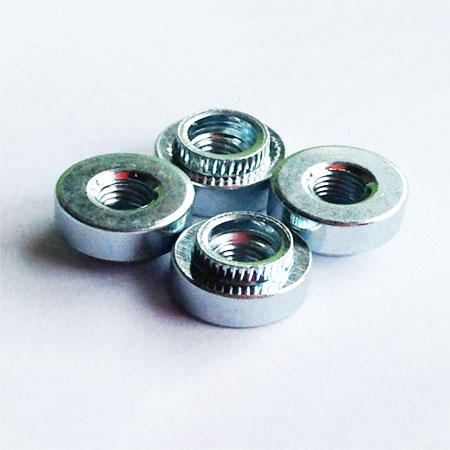Introduction to Cold Heading Fasteners
Cold Heading Fasteners are high-strength components created through a cold forming process, where metal wire is shaped at room temperature into various fastener configurations. This method involves using a series of dies and punches to form the desired shape without the need for heating the material, which maintains the metal’s original properties and enhances its strength.
Cold Heading Process:
1.Material Preparation: Metal wire is cut into specific lengths.
2.Cold Forming: The wire pieces are placed into a die, and punches are used to apply pressure, shaping the metal into the desired fastener form.
3.Secondary Operations: Additional processes such as threading, heat treatment, and surface finishing may be applied to achieve the final product specifications.
Key Characteristics:
1.High Strength: Cold heading improves the grain structure of the metal, resulting in stronger fasteners.
2.Precision: The process allows for the production of fasteners with tight tolerances and consistent dimensions.
3.Cost-Effective: Efficient material usage and high production speeds make cold heading an economical manufacturing method.
4.Versatility: Suitable for producing a wide range of fasteners, including screws, bolts, rivets, and pins in various sizes and shapes.
Applications:
1.Automotive Industry: Used in assembling vehicles, ensuring secure and reliable connections.
2.Aerospace Industry: Critical for high-stress applications where strength and reliability are paramount.
3.Construction: Ideal for building structures, providing durable and robust fastening solutions.
4.Electronics: Used in assembling electronic devices, ensuring precise and secure connections.
5.Cold heading fasteners are essential components in various industries, offering superior strength, precision, and cost-effectiveness. Their ability to withstand high stress and maintain reliable performance makes them a preferred choice for critical applications.

Advantages of Using Cold Heading Fasteners
1. Superior Strength and Durability
Cold heading enhances the grain structure of the metal, resulting in fasteners with exceptional strength and durability. This process creates fasteners that can withstand high stress and heavy loads, making them ideal for critical applications in industries such as automotive, aerospace, and construction.
2. High Precision and Consistency
Cold heading allows for the production of fasteners with tight tolerances and consistent dimensions. This precision ensures reliable performance and uniformity in assembly, reducing the risk of component failure and enhancing overall product quality.
3. Cost-Effectiveness
The cold heading process is highly efficient, utilizing material effectively and reducing waste. High production speeds and low material costs make cold heading a cost-effective manufacturing method, especially for large-scale production runs.
4. Enhanced Material Properties
Cold heading is performed at room temperature, preserving the inherent properties of the metal. This results in fasteners with improved mechanical properties, such as hardness and resistance to wear and fatigue, without the need for additional heat treatment.
5. Versatility
Cold heading can produce a wide range of fasteners, including screws, bolts, rivets, and pins, in various sizes and shapes. This versatility makes it suitable for diverse applications across multiple industries, from electronics to heavy machinery.
6. Eco-Friendly Process
Cold heading is an environmentally friendly process, as it generates minimal waste and typically requires less energy compared to other manufacturing methods like hot forging. This makes it a more sustainable choice for producing high-quality fasteners.
7. Reduced Production Time
The high-speed nature of the cold heading process significantly reduces production time. This quick turnaround allows manufacturers to meet tight deadlines and respond swiftly to market demands, improving overall productivity.
8. Improved Surface Finish
Cold heading provides a smooth surface finish on fasteners, reducing the need for additional surface treatments. This enhances the appearance of the final product and ensures better performance in applications where surface quality is critical.
9. Reliable Performance in Extreme Conditions
Cold headed fasteners are known for their excellent performance in extreme environmental conditions, such as high temperatures and corrosive environments. This reliability makes them suitable for demanding applications where other fasteners might fail.
10. Flexibility in Design
The cold heading process allows for complex geometries and custom designs, enabling manufacturers to produce fasteners tailored to specific requirements. This flexibility in design ensures that the fasteners meet the unique needs of various applications.
Previous: Pressure Riveting Screws